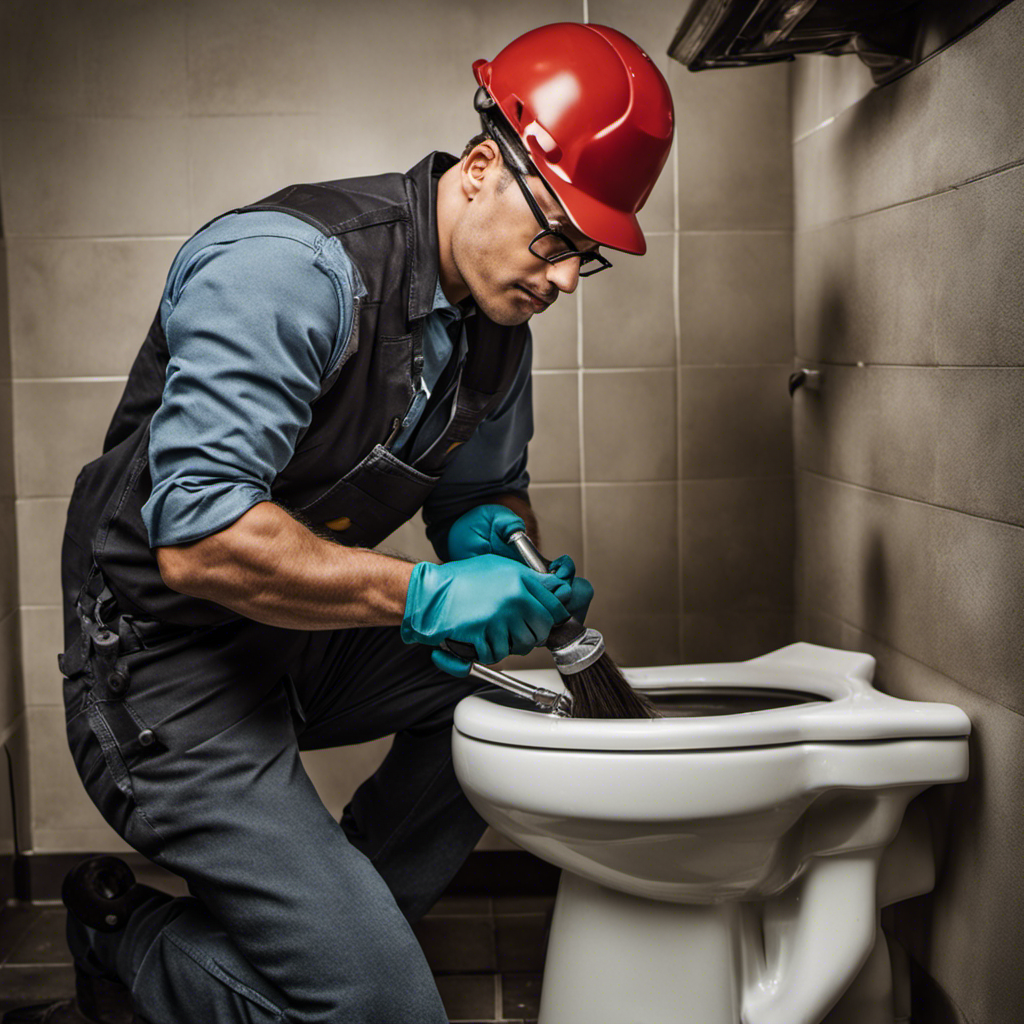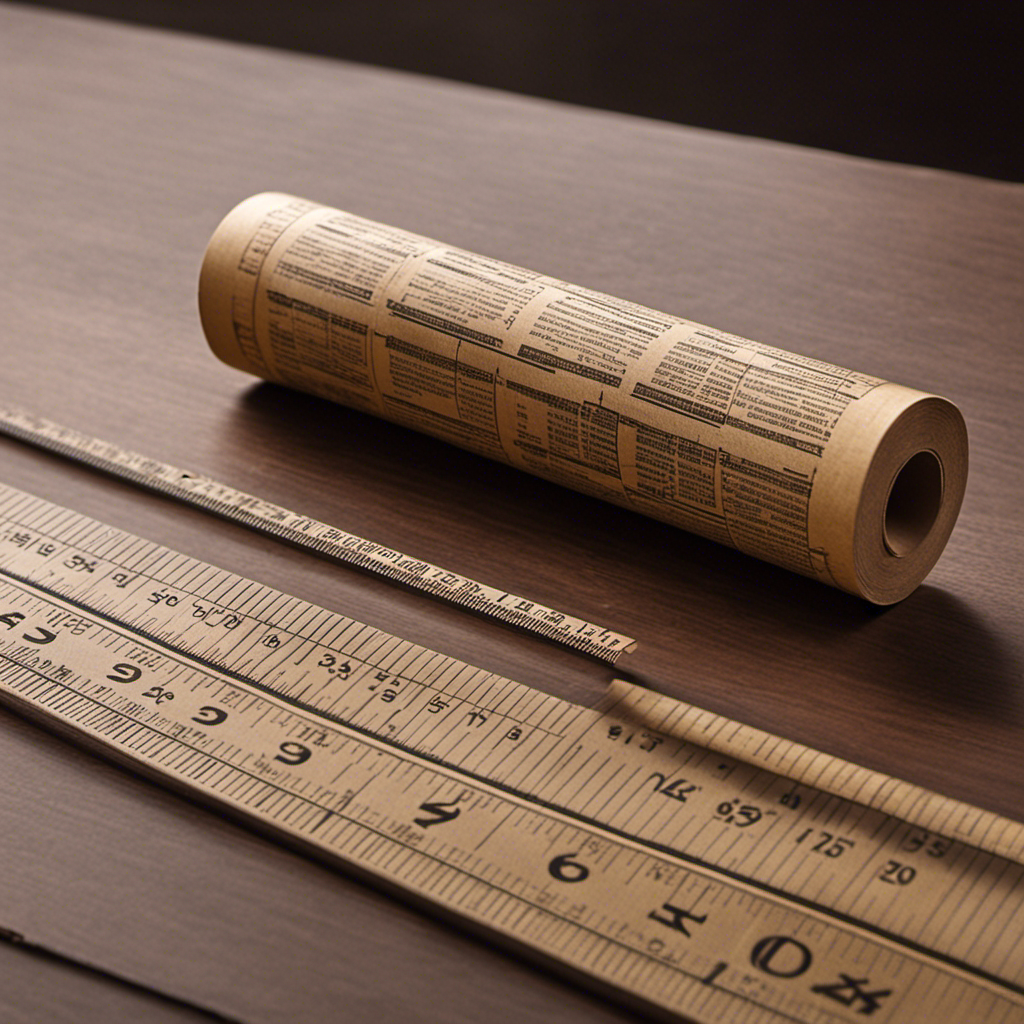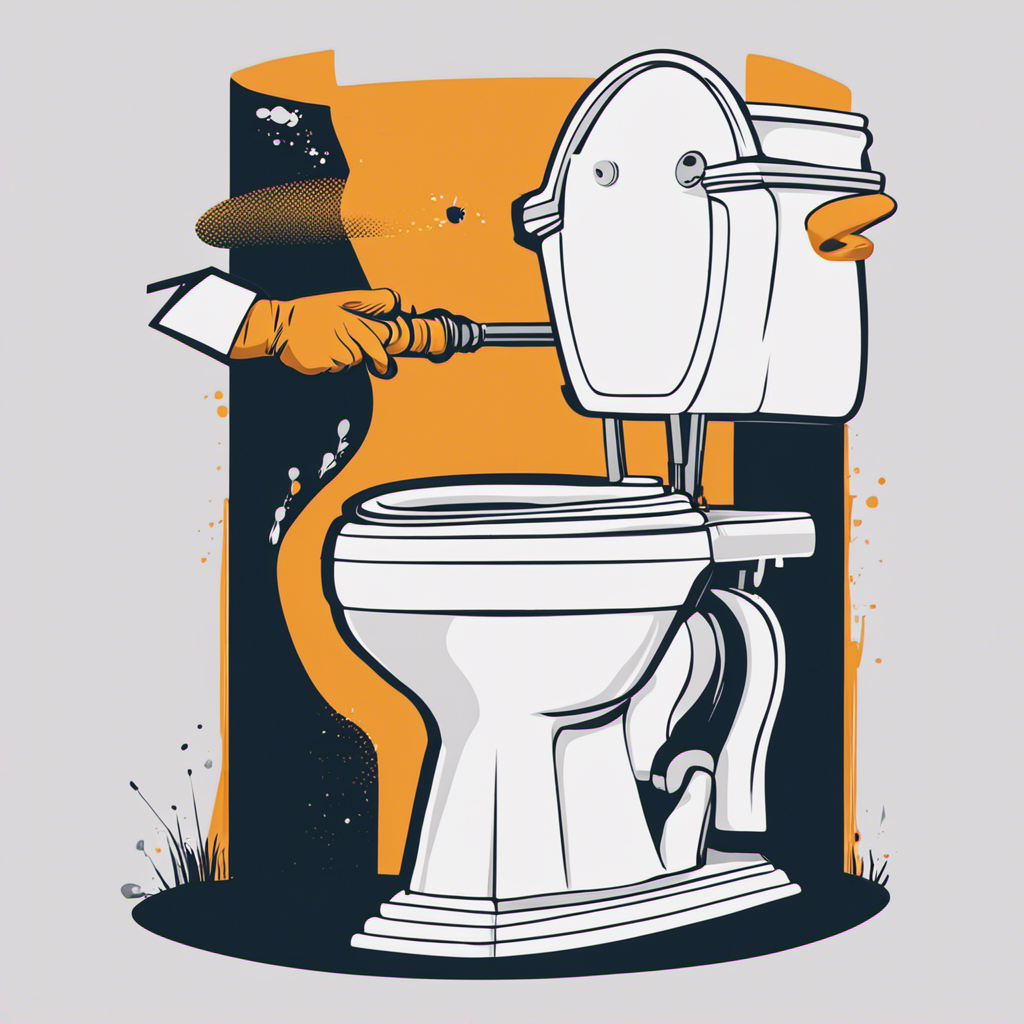Hey there!
Ever wondered how to keep your toilet fill valve clean and functioning properly? Well, I’ve got you covered.
In this article, I’m going to walk you through the step-by-step process of cleaning your toilet fill valve, using some basic tools and materials.
We’ll also troubleshoot common issues and discuss some maintenance tips to ensure a clean and efficient fill valve.
So, let’s dive in and make your toilet experience a little smoother, shall we?
Key Takeaways
- The fill valve is a crucial component for proper toilet functioning.
- Proper maintenance and repair prevent water wastage and ensure smooth operation.
- Vinegar and mild detergent are effective for cleaning the fill valve.
- Regular cleaning and maintenance of the fill valve prevent potential problems and costly repairs.
Understanding the Toilet Fill Valve
The toilet fill valve is responsible for refilling the tank after each flush. It is a crucial component that ensures proper functioning of the toilet. When there is a problem with the fill valve, it can lead to various issues like slow refilling, constant running water, or even a complete failure to refill the tank.
To determine if the fill valve needs repair, there are some signs to look out for. Firstly, if you hear a hissing or trickling sound even when the toilet is not in use, it may indicate a faulty fill valve. Additionally, if the tank takes longer than usual to refill or if the water level is not reaching the desired level, it’s a clear indication that the fill valve needs attention.
Proper maintenance and prompt repair of the toilet fill valve can help prevent water wastage and ensure the smooth operation of your toilet.
Tools and Materials Needed
In order to effectively clean and maintain toilet fill valves, it is important to have the right cleaning supplies on hand. Essential cleaning supplies include a mild detergent or vinegar solution, a soft brush or cloth, and a small bucket for mixing and holding the cleaning solution.
Proper valve maintenance involves regularly inspecting the valve for any signs of wear or damage, such as leaks or corrosion, and promptly addressing any issues to ensure optimal performance and longevity.
Essential Cleaning Supplies
To properly clean a toilet fill valve, you’ll need a few essential cleaning supplies. Maintaining and troubleshooting your toilet fill valve is crucial to ensure proper functionality and prevent any potential issues. Here are the necessary supplies you’ll need:
| Cleaning Supplies | Purpose |
|---|---|
| Vinegar | Dissolves mineral deposits |
| Toothbrush | Scrubs hard-to-reach areas |
| Rubber gloves | Protects hands from chemicals |
| Clean cloth | Wipes away dirt and grime |
Using vinegar is an effective way to dissolve mineral deposits that can clog the fill valve. A toothbrush will help you scrub away any dirt or grime in hard-to-reach areas. Rubber gloves are essential to protect your hands from any chemicals you may use during the cleaning process. Finally, a clean cloth will help you wipe away any remaining residue. With these supplies, you’ll be able to effectively clean and maintain your toilet fill valve, ensuring its optimal performance.
Proper Valve Maintenance
Make sure you regularly check and maintain your valve to prevent any potential issues. The toilet fill valve is an essential component of your toilet’s flushing system. Neglecting its maintenance can lead to toilet fill valve problems and even costly repairs.
Here are some signs of a dirty fill valve that indicate it’s time for cleaning:
- Weak or inconsistent water flow during flushing.
- Constant running or leaking of water into the toilet bowl.
To properly clean your fill valve, follow these steps:
- Shut off the water supply to the toilet.
- Remove the toilet tank lid and locate the fill valve.
- Disconnect the water supply line from the fill valve.
- Use a soft brush or cloth to scrub away any debris or mineral deposits.
- Reassemble the fill valve and reconnect the water supply line.
- Turn on the water supply and check for any leaks.
Regularly cleaning your toilet fill valve will ensure its proper functioning and prevent any potential problems.
Step-by-Step Cleaning Process
Before we dive into the step-by-step process of cleaning a toilet fill valve, it’s important to understand the necessary cleaning tools and how to troubleshoot common issues.
To effectively clean the valve, you will need a pair of pliers, a small wire brush, and a vinegar solution.
Troubleshooting common issues may include addressing leaks, water flow problems, or a faulty valve mechanism.
Necessary Cleaning Tools
You’ll need a few tools to clean a toilet fill valve. Here are the necessary tools:
- Adjustable wrench
- Screwdriver
To begin the cleaning process, you should first identify the signs of a clogged fill valve. These signs may include a weak or inconsistent flush, a constantly running toilet, or water leaking from the tank. If you notice these issues, it’s time to clean or even replace the fill valve.
Once you have the necessary tools, start by shutting off the water supply to the toilet. Use the adjustable wrench to disconnect the water supply line from the fill valve.
Next, use the screwdriver to remove the cap on top of the valve. This will allow you to access the inner components for cleaning. Follow the manufacturer’s instructions to clean the valve thoroughly and remove any debris or mineral buildup.
Troubleshooting Common Issues
If your toilet is constantly running, it could be a sign of a clogged or malfunctioning fill valve. Toilet fill valve leaks and noise are common issues that can disrupt the smooth operation of the toilet.
When faced with these problems, troubleshooting becomes essential. To troubleshoot a toilet fill valve leak, start by inspecting the water level in the tank. If it is too high, adjust the float to lower the water level. If the valve itself is leaking, you may need to replace it.
As for troubleshooting toilet fill valve noise, the most common culprit is a worn-out or damaged valve. In this case, replacing the valve is usually the best solution.
Troubleshooting Common Issues
One common issue with toilet fill valves is when the water keeps running after flushing. This can be a frustrating problem to deal with, but luckily there are a few possible solutions.
Here are some troubleshooting tips for identifying fill valve problems:
-
Check for a faulty flapper valve: Sometimes the flapper valve, which controls the flow of water from the tank to the bowl, can become worn or misaligned. This can cause water to continually leak into the bowl, leading to constant running.
-
Inspect the float mechanism: The float mechanism is responsible for regulating the water level in the tank. If it’s damaged or not adjusted correctly, it can cause the fill valve to malfunction and keep running.
By following these troubleshooting steps, you can determine the cause of the running water and take the necessary steps to fix it. However, if the problem persists, it may be time to consider a toilet fill valve replacement. This will ensure that your toilet operates smoothly and efficiently.
In the next section, we will discuss some maintenance tips for keeping your fill valve clean and in good working condition.
Maintenance Tips for a Clean Fill Valve
Now that we have discussed some common issues with toilet fill valves, let’s move on to maintenance tips for keeping your fill valve clean and preventing clogs. Cleaning your fill valve regularly is essential to ensure its proper functioning and prevent any blockages. Here are some effective cleaning techniques you can use:
- Remove debris: Periodically inspect the fill valve for any debris or sediment buildup and remove it using a soft brush or cloth.
- Flush with vinegar: Fill a bucket with equal parts vinegar and water. Disconnect the water supply to the fill valve and submerge it in the vinegar solution for a few hours. This will help dissolve mineral deposits and keep the valve clean.
- Check for leaks: Regularly inspect the fill valve for any leaks or drips. If you notice any, promptly replace any worn-out seals or components.
- Prevent clogs: To prevent clogs, avoid flushing items that can easily get stuck, such as sanitary products or excessive toilet paper.
By following these maintenance tips, you can ensure a clean and properly functioning fill valve, preventing any potential issues in the future.
| Cleaning Techniques | Preventing Clogs |
|---|---|
| Remove debris | Avoid flushing items |
| Flush with vinegar | prone to clogging |
| Check for leaks |
Final Thoughts on Toilet Fill Valve Cleaning
In conclusion, it’s important to regularly maintain your fill valve to ensure proper functionality and prevent any potential issues.
Neglecting to clean your fill valve can lead to clogs, leaks, and other problems that may require costly toilet fill valve replacements.
To avoid these issues, here are some signs that indicate your fill valve may be dirty and in need of cleaning:
-
Slow filling: If your toilet takes longer than usual to refill after flushing, it could be a sign of a dirty fill valve.
-
Weak flush: A weak flush can also indicate a dirty fill valve that is not allowing enough water to enter the tank.
-
Strange noises: If you hear hissing or gurgling sounds coming from your toilet tank, it may be due to a dirty fill valve.
Regularly cleaning your fill valve will help maintain its efficiency and prolong its lifespan, ultimately saving you time and money in the long run.
Conclusion
In conclusion, cleaning a toilet fill valve is a simple yet essential maintenance task that can prevent issues like clogs and leaks. By following the step-by-step process outlined in this article and using the necessary tools and materials, you can ensure the optimal functioning of your toilet.
Interestingly, did you know that a leaking fill valve can waste up to 200 gallons of water per day? Regular cleaning and maintenance can help prevent such wastage and save both water and money.
So don’t neglect your toilet fill valve, keep it clean and enjoy a hassle-free bathroom experience.










